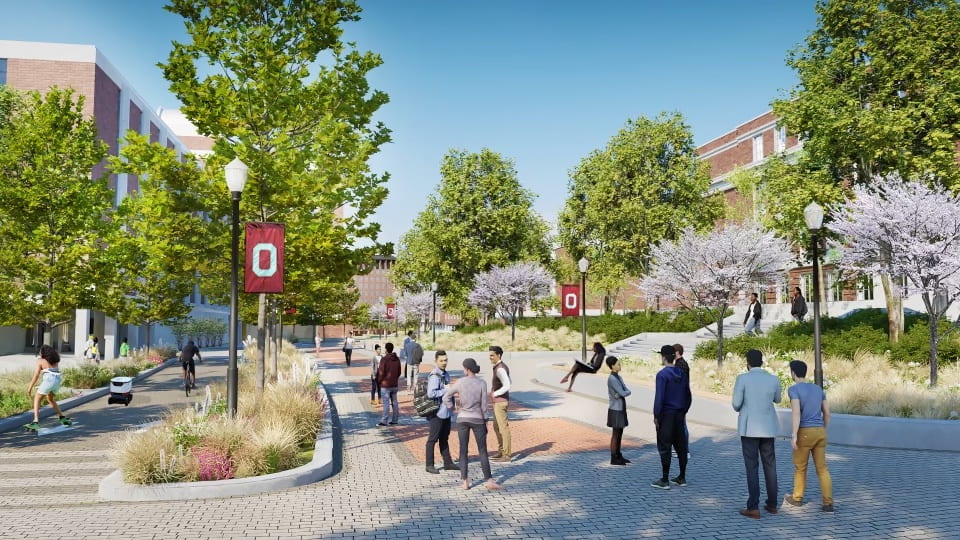
The proposed look of Neil Avenue in the Framework 3.0 outline. Credit: The Ohio State University.
As always, time will bring change on Ohio State’s campus.
Framework 3.0, introduced to the board of trustees in August, outlines changes to benefit the university area within the next five to seven years. Amanda Hoffsis, vice president of planning, architecture and real estate in the Office of Administration and Planning at Ohio State, said the plan intends to enhance students’ quality of life and further the university’s mission of excellence in academics and research.
“There’s parts of campus that are very much student-focused, so we really drilled into that student experience,” Hoffsis said. “Some of the goals are improved outdoor space, improved connections and transportation and a more equitable environment.”
A main goal of Framework 3.0 is to update campus areas so all students have the same access to resources.
Hoffsis summarized this as “equity in experience and equity in access and a modernization of our facilities, meaning getting into the dorms and getting them renovated over time, so there’s that equity of conditions, updating classroom spaces to be more modern and more flexible.”
Another point of focus is in the connection of West Campus, which Hoffsis said is an unwelcoming, car-centric environment that discourages student foot traffic.
“It’s not as friendly, it’s a bit of a no man’s land. The speed gets faster for cars, and there’s no amenities for pedestrians and really no amenities for bikes and scooters,” Hoffsis said. “We think we can improve upon that so that east-west connection is pretty solid, especially as Carmenton begins to develop.”
The Carmenton project is a developing district near the West Campus area. The Pelotonia Research Center, funded by the namesake company to assist in the James Cancer Hospital’s research, will soon be established as part of this new district.
“We see this as a thriving neighborhood, there’s affordable housing as a component of that, which we’re really excited about. There’ll be some moderate retail, mostly food and beverage, to support this emerging neighborhood, but predominantly it’s going to be research,” Hoffsis said.
Other priorities in the outline include updates to Neil Avenue to allow more pedestrian traffic and renovations of residence halls on South Campus and consideration for additional residence halls on North Campus. In addition, there are plans for improvements for outdoor spaces on The Oval and other campus areas and a replacement of Evans Lab and additional lab and classroom space west of Stillman Hall, according to Hoffsis.
However, the plan does not outline specific project details. Dan Hedman, director of marketing and communications for the Office of Administration and Planning, said rather than outlining specifics, the plan highlights goals and visions that will be fleshed out further as needed.
“The Framework plan itself doesn’t say necessarily, ‘This building will be built at this date and cost this much money,’ that happens kind of after the fact using the planning principles that are laid out in the master plan,” Hedman said.
Framework 3.0 is an update to Framework 2.0 from 2017, which itself is an advancement to the original 2010 Framework. Completed Framework projects include the 15th Avenue and High Street Arts and North Campus Residential districts.
“The Framework plan is a guiding vision for campus planning and it is fluid, it evolves over time, which is why every five or seven years they try to change the plan,” Hedman said.


